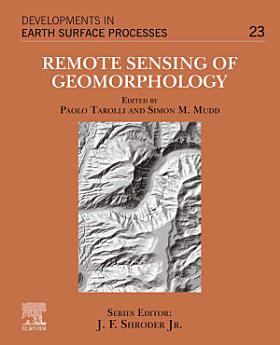Remote Sensing of Geomorphology
Sobre este e-book
Sobre o autor
Paolo Tarolli is Professor in Water Resources Management and Integrated Watershed Management, and PI of Earth Surface Processes and Society research group at the University of Padova (Italy). He has a PhD in Environmental Watershed Management and Geomatics and has worked as academic staff at the University of Padova since 2011. He is an expert in digital terrain analysis, earth surface processes analysis, natural hazards, geomorphology, hydro-geomorphology, LIDAR, and structure-from-motion photogrammetry. His new research directions include the analysis of topographic signatures of human activities from the local to regional scale. He is Deputy President of the Natural Hazards Division of the European Geosciences Union (EGU) and Deputy President of sub-division VII (Information and Communication Technologies) of the Italian Society of Agricultural Engineering. Prof. Tarolli is also Executive Editor of Natural Hazards and Earth System Sciences (Copernicus) and associate editor or editorial board member of several international journals. He is the author of more than 100 papers published in international peer-reviewed journals. He has given more than 20 invited talks in international research institutions and foreign Academies (i.e., Princeton University, EPFL, AgroParisTech, National Cheng Kung University, China University of Geosciences, Dalian University and Technology) and at international meetings (IGC, AAG, ISPRS, RGS-IBG, AOGS-AGU, Soil Science Society of China).
Simon Mudd is Professor of Earth Surface Processes at the university of Edinburgh. He has a PhD in Environmental Engineering and has worked as academic staff at the University of Edinburgh since 2007. Prof Mudd has over a decade of experience in numerical modelling and remote sensing of Earth surface processes including landsliding, flooding and sediment transport. Winner of the 2013 Arne Richter award for outstanding young scientists from the European Geoscience Union and the 2014 Gordon Warwick Medal from the British society of geomorphology. Has led the development of the topographic analysis software package LSDTopoTools (https://lsdtopotools.github.io/) which has published algorithms for extraction of channel networks from high resolution data, detection of terraces and floodplains, exploration of channel steepness in regards to tectonic and hydrologic hazards, and linking landsliding with both subsurface hydrology and vegetation. He has over 50 publications in leading international journals including Nature and Science, and has collaborated with both industry and government organizations on mitigating risk from natural hazards.







